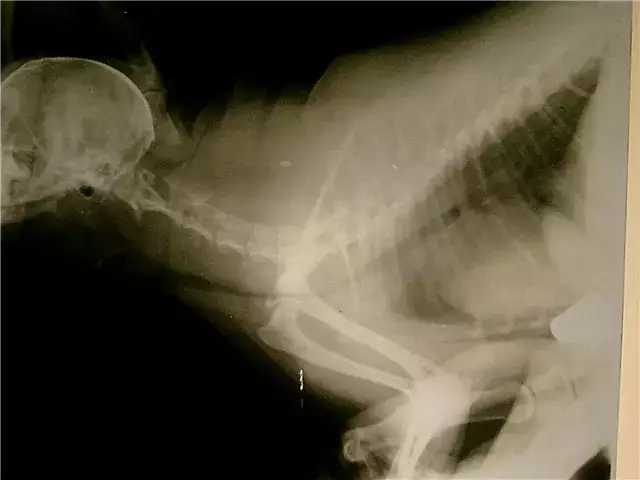- Author Rachel Wainwright [email protected].
- Public 2023-12-15 07:39.
- Last modified 2025-11-02 20:14.
Argidin
Instructions for use:
- 1. Release form and composition
- 2. Indications for use
- 3. Contraindications
- 4. Method of application and dosage
- 5. Side effects
- 6. Special instructions
- 7. Drug interactions
- 8. Analogs
- 9. Terms and conditions of storage
- 10. Terms of dispensing from pharmacies

Arguedin is a sulfanilamide drug for external use with a wide spectrum of antibacterial action, has a bacteriostatic effect.
Release form and composition
Dosage form - cream for external use 1%: homogeneous mass from light yellow to white (40 g each in an aluminum tube, in a cardboard box 1 tube).
1 g of cream contains:
- active substance: silver sulfadiazine - 0.01 g;
- auxiliary components: methyl parahydroxybenzoate, propylene glycol, liquid paraffin, cetomacrogol 1000, purified water, petroleum jelly.
Indications for use
- long-term non-healing and trophic ulcers (including stump wounds);
- superficial infected wounds and burns with mild effusion;
- bedsores;
- skin transplant;
- abrasions.
Contraindications
- deep purulent burns and wounds with severe exudation;
- oppression of bone marrow hematopoiesis;
- hepatic and / or renal failure;
- deficiency of glucose-6-phosphate dehydrogenase;
- porphyria;
- period of breastfeeding;
- age up to 2 years;
- hypersensitivity reactions to the components of the drug.
The use of Argedin during pregnancy is allowed (if the expected effect of therapy for the mother is exceeded over the potential threat to the fetus) only in small areas of the skin and for the shortest possible period.
Method of administration and dosage
The cream is applied externally by applying to a previously cleansed surface of damaged skin.
Recommended dosage: 2 mm thick layer of the preparation 2 times a day. In severe forms of injury, it is recommended to cover the wound with a sterile bandage, which should be changed depending on the severity of the clinical condition 2-4 times a day. The treatment continues until the wound is completely healed.
Changing the dressing is not painful. The wound surface is cleaned with an antiseptic solution or a stream of water.
Side effects
- allergic reactions: photosensitivity, skin rash;
- systemic reactions: against the background of prolonged use of high doses (with large areas of damage) - headache, leukopenia, dyspepsia;
- others: at the site of application - itching, burning, staining of the skin in a brownish-gray color.
special instructions
Avoid direct sunlight on the treated parts of the body.
After each application of the cream, the tube should be tightly closed.
Argidin does not affect the patient's ability to drive vehicles and mechanisms.
Drug interactions
The simultaneous use of cimetidine increases the risk of developing leukopenia.
Analogs
Argedin's analogues are: Silvederm, Dermazin.
Terms and conditions of storage
Keep out of the reach of children.
Store at temperatures up to 25 ° C, away from heat sources.
Shelf life is 2 years.
Terms of dispensing from pharmacies
Dispensed by prescription.
Information about the drug is generalized, provided for informational purposes only and does not replace the official instructions. Self-medication is hazardous to health!






